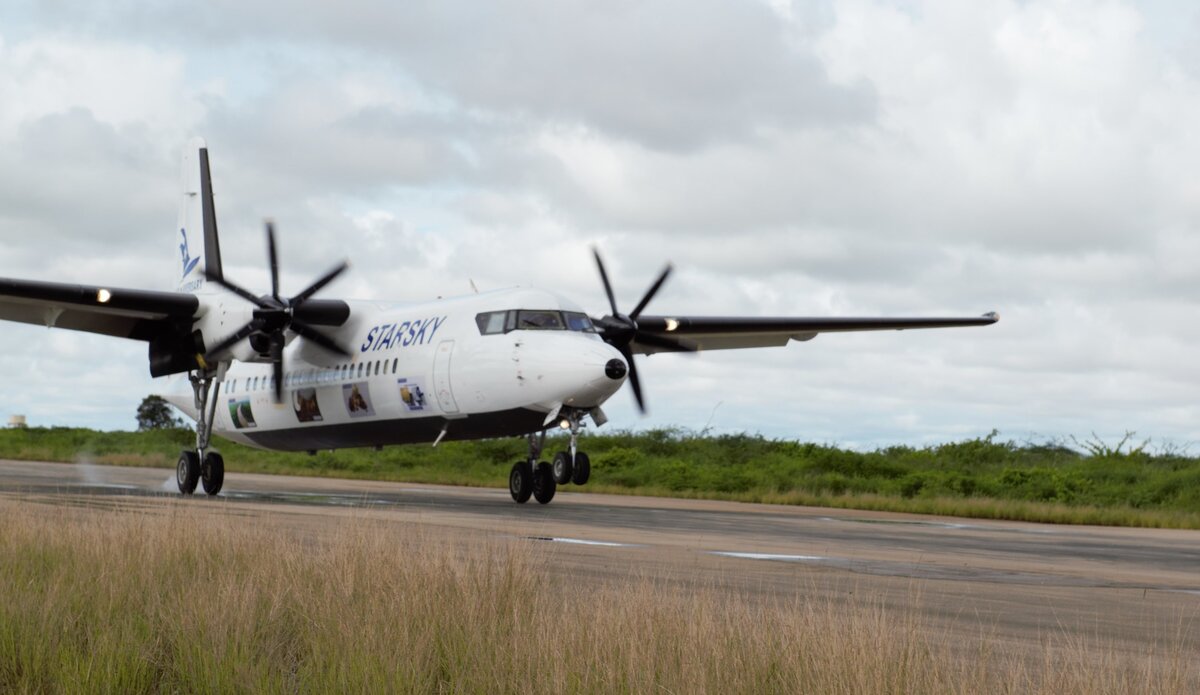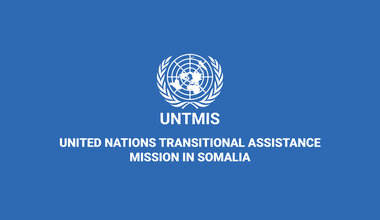Improved runways help Baidoa’s Shati-Gaduud Airport take off
Baidoa – The road connecting the south-west city of Baidoa to the Somali capital of Mogadishu is a dangerous one, often plagued by uncertainty and insecurity.
This has meant a strong reliance on air travel for the residents of Baidoa, the largest city in Somalia’s Southwest State with a population of more than 1.5 million people.
However, even that option has come with its own problems as the condition of the runway and adjoining taxiways at Baidoa’s airport was so poor that, for many years, aircraft taking off from and landing at the airport’s runways, especially fixed-wing aircraft, were at risk of an accident. This led to fewer flights to and from Baidoa.
All of this meant plenty of worry for Dr. Fowziyo Omar Mohamud, the medical coordinator for Isha Hospital in Baidoa.
“It has been difficult to transport fragile medical equipment such as ultrasound equipment and some drug substances, lab re-agents and opioid drugs on the road due to the fear of affecting the quality of the load,” the doctor says about her efforts to obtain medical supplies.
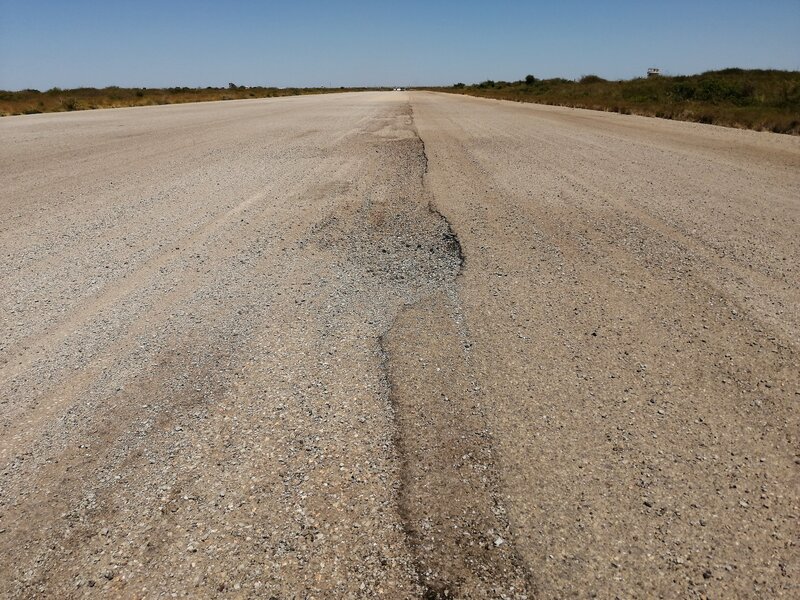
Severely damaged
Formerly known as Baidoa Airport, the aerodrome has been renamed the Shati-Gaduud International Airport. It was built during the government of former President Mohamed Siad Barre in 1972.
The country’s descent into civil war in the 1990s, and subsequent security challenges in South West State, meant that the airport was not maintained for almost three decades.
“Due to the absence of regular maintenance, the runway got severely damaged. Even the UN had to stop fixed-wing flights to and from Baidoa on safety grounds for years,” says Mohammad Shameem, an Air Operations Officer serving in Baidoa with the United Nations Support Office for Somalia (UNSOS).
“A limited number of commercial airlines continued and, although they had to fly with reduced loads, it was still a serious risk to life and property,” he adds. “It became imperative to rehabilitate the runway to continue safe flight operations.”
Due to the financial and technical requirements for repairing the runways, the Southwest State authorities were unable to deal with the rehabilitation project fully on their own – which led to the United Nations getting involved.

UNSOS steps in
In partnership with Southwest State’s administration, the UN Support Office for Somalia (UNSOS) took up the challenge of getting the runway of Shati-Gaduud International Airport up to scratch.
UNSOS is tasked with providing support to the African Union Transition Mission in Somalia (ATMIS), the UN Assistance Mission in Somalia (UNSOM) and Somali security forces in creating space for political reconciliation, state formation and extension of government authority across Somalia. It leapt to the new challenge.
Starting in January 2021, the 15-month project’s overall aim was to rehabilitate around two kilometres of the airport’s runway and taxiways. This involved an extensive re-setting of the asphalt and increasing the width of the taxiways so that it could safely bear the weight of larger aircraft.
Completing the project was not straightforward due to delays in obtaining some materials, security challenges and the COVID-19 pandemic. It ended up starting in March 2021 and the main part of the project was completed in June 2022.
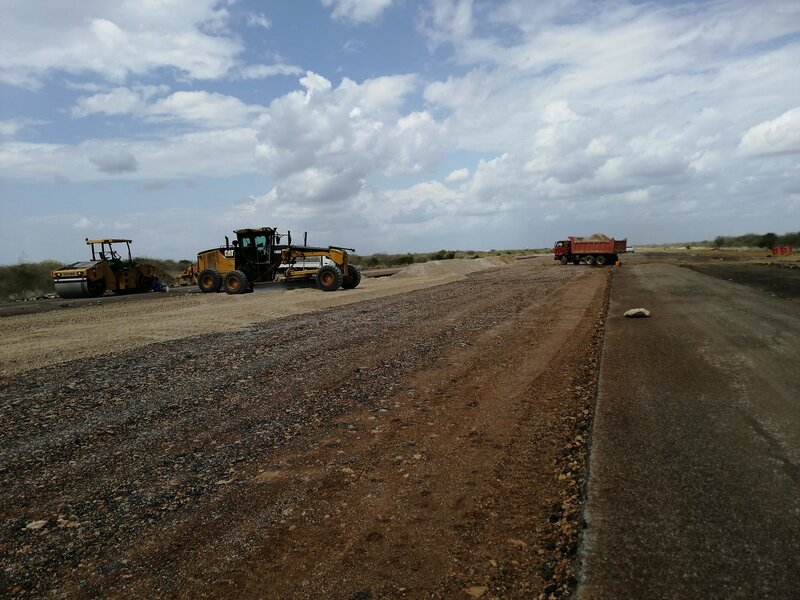
Throughout the repair process, there was little negative impact on the existing flow of people and goods to and from Baidoa via the airport.
“The UN did the engineering assessment, planned and developed the rehabilitation programme, and then completed the whole project without closing the runway for a single day for fixed-wing operations,” notes Mr. Shameem.
“Following the completion of the rehabilitation, the runway has become suitable for large aircraft – even up to one as large as C-130 Hercules,” he continues. “So now, the safety concerns stemming from the condition of the runways have been eliminated.”
The C-130 is one of the world’s biggest propeller cargo aircraft, able to carry a maximum payload of around 19,000 kilograms and measuring almost 30 metres in length and 40 metres in wingspan.
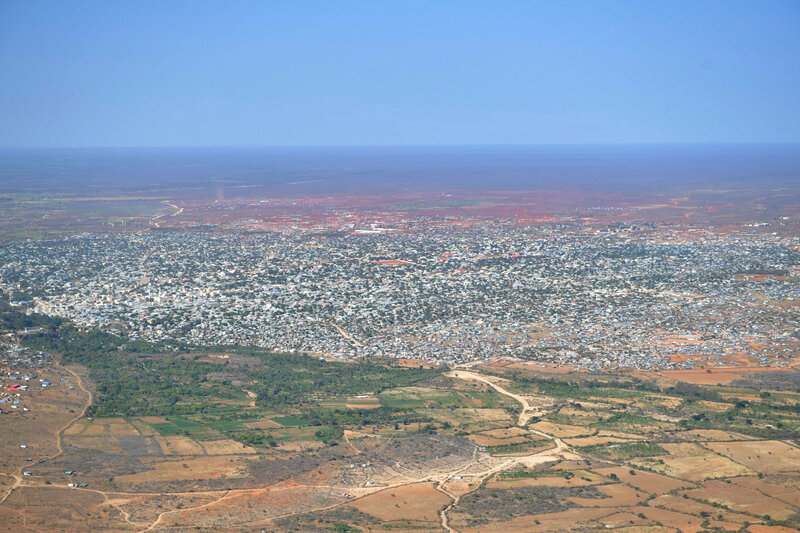
Immediate impact
The impact of the rehabilitation has been immediate and noticeable, allowing for increased traffic from regular airport users such as international partners like the United Nations, and commercial operators. The increase in the number of people and goods has also meant economic benefits for South West State.
Currently, there are around 30 commercial flights to Baidoa each week, with 20 of these being from Mogadishu.
An average of 1,500 to 2,000 people use the airport on a weekly basis now; this is up from an average of 1,000 people per week before the rehabilitation project. That figure is expected to rise in time to come as larger aircraft make use of the new tarmacs.
“We were on the verge of shutting down this airport, but fortunately it was reconstructed by the United Nations. It had been very rough and dangerous for lives and property. After rehabilitation, aircraft can now enjoy safe flights with unlimited loads,” says Salat Mohamed Mukhtar, the manager of Shati-Gaduud Airport.
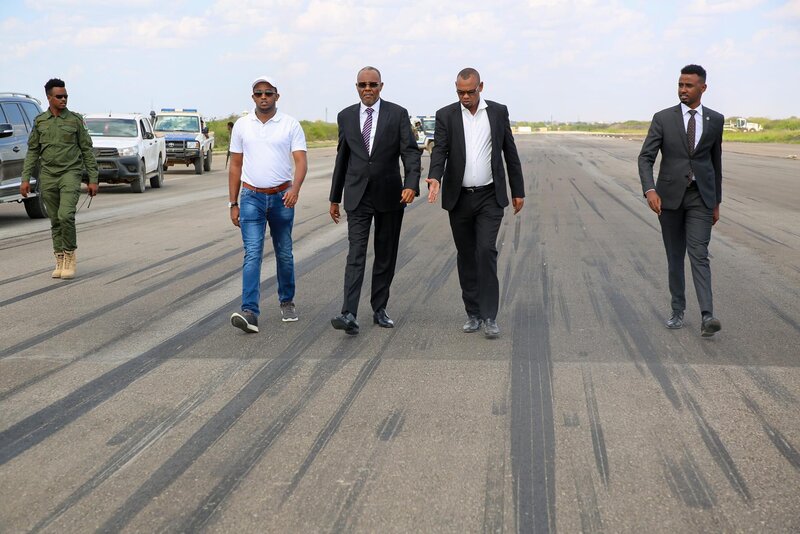
“Imagine – today we catered for four humanitarian flights, three commercial flights and two UN flights,” he adds. “It has significantly increased our revenue from flight services, enhanced transportation of commodities and improved the region’s economic infrastructure.”
Away from the commercial and transportation benefits, the rehabilitated runway and taxiways also contribute to broader peacebuilding efforts.
“By improving the connection between Baidoa and Mogadishu, it has indirectly contributed to maintaining – and possibly strengthening – the relationship between the centre, in this Mogadishu, and the periphery, that is, the country’s Federal Member States,” notes the Head of Office for the UN’s operations in Southwest State, Arnaud Laloum.
Meanwhile, for Dr. Mohamud, her worries over the hospital receiving much-needed medicine and equipment have eased.
“All this has changed with the rehabilitation of the airstrip,” she says.
 UN
UN
